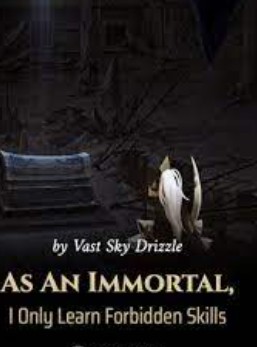Under the huge inertia, the nose of the Stuka bomber was smashed. In the raging fire, the inseparable bomb under the belly finally hit the armor of the turret.
Rocket-assisted bombs, in addition to allowing the bombs to fall on the warship faster, thereby reducing the chance of maneuvering the warship, it is more important that the bomb can be accelerated. After all, battleships are armored and the speed is higher. Increasing the probability of penetration, exploding on the opponent's surface, and exploding inside the opponent, this effect is worlds apart.
Now that it has not been separated from the pylon, the bomb will not be unlocked, and the rocket booster will not be activated. Therefore, it is just an ordinary bomb, but this bomb is a bit heavy.
A bomb alone is one ton. If even the aircraft is counted, it weighs more than five tons. When such a bomb falls, the impact with the battleship is quite strong.
After the violent impact, the pylon was finally disengaged, the bomb followed the just designed procedure, and the rocket engine at the tail ignited. The bomb only had time to move forward for one meter, and it was in close contact with the turret.
At this time, the surface of the turret had begun to burn, and the high temperature made the armor of the turret soft. In this case, a one-ton bomb broke through a large hole effortlessly and fell from above into the turret. .
The rocket booster engine at the tail is still igniting, and the whole bomb is like a rocket, swishing in.
"Boom!" In the huge explosion, the turret was lifted off, and this explosion is likely to bring more terrible consequences. The detonation of the ammunition depot will make it the same as the Mara, sinking within a few minutes. Go into the sea.
But its destiny is actually better than that of the Mara.
With the sound of the explosion, the entire battleship shook violently, and a large area of cracks appeared in the damaged bottom of the ship in an instant. Countless sea water poured in and poured into various compartments, and it also covered the ammunition warehouse at the bottom of the turret.
The propellant and the warhead in the ammunition warehouse were soaked in seawater, and there was no possibility of sabotage.
The whole of the October Revolution is still intact. Except for the devastating damage to the turret, which makes people look a little bit overwhelmed, at least there is no difference in the body.
However, it is sinking as a whole.
The first bomb had already damaged its bottom, and the shock caused by the second explosion made his bottom irreparable. Sea water was constantly pouring in through the cracks below. The sinking of this battleship, Just a matter of time.
The number of Stuka bombers was small, and the two Soviet battleships they focused on had been scrapped. At this time, in the clouds, dive bombers continued to burst out.
These two battleships are the capital ships of the Soviet Baltic Fleet. The remaining warships have a displacement of no more than 10,000 tons. They are just some destroyers and frigates, and there are not many targets worth attacking.
After turning around the sea, the remaining pilots reluctantly prepared to find their targets and dive, preparing to throw their bombs on those small targets.
At this moment, an order came from their headset: "Attention, change the target, attack the shore defense guns on the shore, and leave the other warships to our fleet."
At this time, in the distance between the sea and the sky, where the water and the sky meet, a fleet can already be seen arriving. It is one's own fleet coming.
Leave these small warships to your own warships to bombard. The cost of shells is very low. They have to fight more effective targets, that is, the artillery on the shore.
Coastal defense guns are the most effective way to control the coast, especially in waterways like Kronstadt. Many such coast defense guns stand in the fortification communities on both sides of the strait.
The largest of them, there are four triple-mounted 305mm cannons, which are almost the same as the naval guns of battleships. Only one turret can be seen from the outside, but each tower-shaped fortification is a whole underground city.
Each fortress was built with a 3-meter-thick concrete shell, and some fortifications were up to 7 floors. The internal facilities are complete, including: hospital, shower, kitchen, dining room and living room. Each fort has its own diesel generator, with its own power supply and water supply system. In addition, special filters and ventilation systems have been installed to ensure that personnel stay in the fortress for 1 week in the presence of toxic pollution.
Such a group of shore defense guns would be a big threat to German warships. Now, instead of attacking the small warships, the remaining bombers should attack these shore fortifications.
"Understood." After receiving the new order, they immediately became excited again. Each coast defense gun position is as spectacular as a battleship, but the difference is that a considerable number of antiaircraft guns are deployed on these coast defense gun positions.
Adding anti-aircraft guns to their warships~www.novelhall.com~ This requires entering the ship repair yard to modify, which is very costly, and it is almost tied to the mid-term improvement of the warship.
However, adding anti-aircraft artillery to the shore artillery position is simple. Just push the towed anti-aircraft artillery over and deploy it.
At this time, the coastal defense artillery positions were also ready.
They were very worried. They watched the German bombers raging in the sky and their battleships being sunk, but they just couldn't help.
Their naval guns could not hit the plane, and their anti-aircraft guns were not within range, so they could only watch the German bombers blow up their two main battleships, and their eyes were all in. Burning with anger.
Just when they were full of fighting spirit, the Germans actually gave up bombing other warships and came to their shore defense artillery positions. This was simply coming to fight.
"Attention, the target, 2-7-0 direction, distance eight, height 37, aim." On the antiaircraft artillery position on the side of the shore defense gun, four 37mm M1939 antiaircraft guns have been deployed. On the front observation deck, the company commander of the artillery company shouted loudly. He raised his binoculars and looked at the German bomber that was flying over.
World War II was quite tragic, and the Soviet-German battlefield was even more tragic. On the land of the Soviet Union, Germany lost tens of thousands of aircraft and countless pilots shed blood in the sky. However, it was not the Soviet air force that really caused the Germans to suffer heavy losses. , But the Soviet anti-aircraft artillery.
The current anti-aircraft artillery shot down more than 15,000 German aircraft, and it is Stuka's number one opponent.
Now, the Soviet air defense weapon is preparing to attack the German bombers. ()
Please remember the domain name of this book's first publication:. Mobile version reading URL:
RECENTLY UPDATES
3.45







